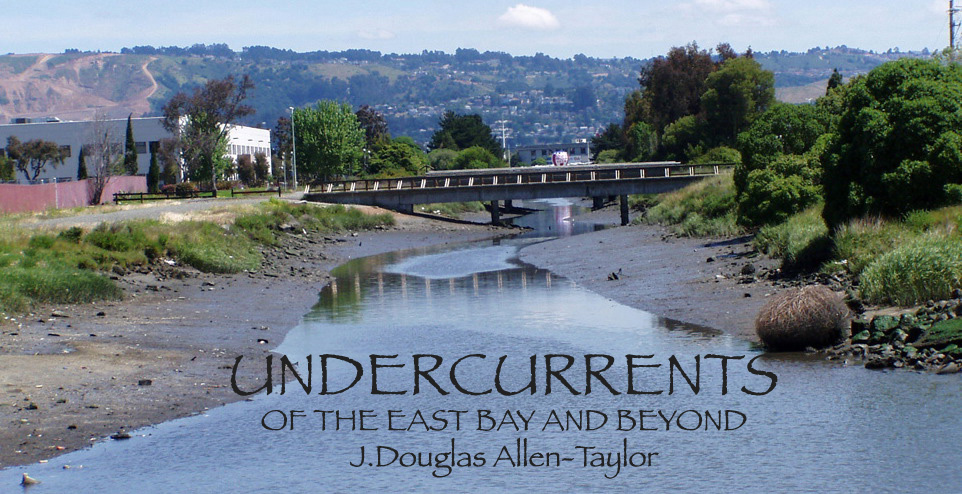|
|
TIME TO MAKE A PLAN FOR OAKLAND'S CENTRAL CORE
December 17 , 2009
The time has come—wouldn’t you think?—for Oakland to stop flailing around with piecemeal “solutions” for the future of the city’s central core and begin organized work on a comprehensive development plan.
While such a comprehensive planning process has been needed for some time, it is particularly compelling during a period when city officials and citizens are considering—in isolation—major initiatives that would completely alter the character of that core neighborhood, including a proposal to build a new professional baseball stadium in the area south of Jack London Square.
The problem is not whether these particular initiatives are good or bad. The problem is that such proposals are being raised in order to meet either short-term or limited goals while not considering how they might affect the heart of Central Oakland and any future plans we might want to make about the makeup of the city we live in.
While there has been much emphasis over the past several years on rebuilding what we traditionally call “downtown”—an emphasis that moved slightly to the north to the “uptown” area during the Jerry Brown years—we should be blocking out a somewhat larger geographical area as what you might call the city’s “commons” or central area.
Taking 14th and Broadway as the central point, you could run a line along Broadway north to the 27th Street natural boundary and south to Jack London Square. Another line could be drawn east to the foot of Lake Merritt and west to the 880 freeway. Putting the compass point at 14th and Broadway, you could then draw a circle on the map that would take in such districts as Chinatown, the Warehouse District, the 2nd-4th Street Loft District, Old Oakland, Oaksterdam, the Kaiser Center, Koreatown, the Laney College-Oakland Museum-Main Library education-cultural center, as well as the traditional downtown government and business center. That comprises Oakland’s central core, the heart of the city.
While there is no official or unofficial tie that binds these various disparate districts together, the individual districts are joined by symbiotic relationships on those districts they border, so that drawing all these intertwining threads together creates a single, bound package.
Traditionally, however, Oakland has tended to make decisions on these various districts as if they were separate entities without considering the effect upon the adjoining districts, or the central core as a whole. The results have been a left-hand, right-hand kind of thing, almost as if the agencies or individuals overseeing each of these individual communities were warring nations trying to grab scarce resources, rather than organs in the same body seeing that the good health of each is necessary for the good health and prosperity of all.
Need examples? Here’s one of many.
Eight years ago, the Port of Oakland bulldozed Jack London Village, the eclectic collection of shops and restaurants that used to be located just south of Jack London Square. During the 1990’s, when JL Square was in one of its many downturns, the Village was the economic and social focal point for the mid-waterfront area. But the Port wanted the location for a major hotel, and so the businesses were evicted and the site was demolished.
In a city that was scuffling to recruit downtown-area businesses, the decision to close down popular existing businesses seemed like an odd choice. What was worse was that the JL Village demolition came right at the time the 2nd Street-3rd Street-4th Street Loft District neighborhood was being created. The Loft District was bringing in new residents, and needed only a commercial and social center to anchor it. JL Village could have been that anchor, and would have prospered accordingly from the large influx of new customers. Instead, the site that the Village once stood on is a parking lot—the promised major hotel never materialized—and the Loft District never developed a neighborhood business district. One suspects that the residents go through the tube to nearby Alameda to spend that money, taking it out of Oakland.
How comprehensive a plan are we talking about? Far more comprehensive than are currently in the makings.
Oakland, under the Ron Dellums Administration, is undergoing a painstaking conforming of the city zoning code to the General Plan, a process that should, when finished, give greater clarity to what types of development we want and what we will be able to do in the all of the city’s neighborhoods, including the greater downtown area. But while this code conforming project is necessary and long overdue, it skips some important preliminary steps.
Berkeley took some of those steps during the multi-year development process of its Downtown Area Plan, in which it created a panel of citizens to make recommendations and develop a plan on what interests Berkeley’s downtown should serve, what types of businesses and agencies should it be trying to attracting, and how it should look. Oakland ought to take on a similar endeavor, but on an even more fundamental level.
One of the most important things that ought to be decided in such a process is who the city’s central core and its various components should be set up serve—residents or outsiders—and, if residents, which category of residents should be encouraged and which, if any, discouraged from coming to the greater downtown.
Those types of decisions are being made every day in the complex interplay between city officials—including police officials—and business and development interests, but not in a way that involves the general Oakland public in the planning process.
Jack London Square Partners, for example—the private company that purchased the heart of Jack London Square from the Port of Oakland back in 2002—is well on the way to trying to change the Square from what was once a major late-night entertainment destination for young people of color to try to attract a more upscale, slightly older crowd.
Some of that purpose was revealed—some disguised—in the reasoning given for the JL Square changes in a recent San Francisco Chronicle article on the decline in the Square’s fortunes:
“(Jack London Square partners Jim) Ellis and his partner, Jim Falaschi of Transbay Holdings,” the Chronicle article reads. “are offering discounted leases and other incentives to snare the kinds of shops and restaurants they believe will attract a crowd with refined tastes [emphasis added]. Fifteen restaurants, ranging from large to small, are planned for the area, and some have already opened. In a parallel effort, the developers ended leases occupied by chain restaurants, such as T.G.I. Friday's, El Torito and the Old Spaghetti Factory, that once made the area feel less like the Ferry Building and more like Fisherman's Wharf. (“Jack London Square's Future Remains Uncertain” December 14, 2009)
While I have no idea why the Spaghetti Factory would have made Jack London Square seem like a tourist trap rather than a unique dining and entertainment destination (the most obvious meaning of the Ferry Building/Fisherman’s Wharf comparison in the article), T.G.I. Friday’s was a popular destination for the youth-of-color crowd. With almost nothing in the Jack London Square area to specifically attract them—other than the Jack London Cinema just outside the Square’s boundaries—that youth-of-color crowd, which once dominated the nighttime Square on weekends, has now largely dissipated. The more upscale crowd—which currently packs uptown—have not yet found much reason to frequent the Square, which is one reason the Chronicle article concluded that “questions remain about whether the [Jack London Square] waterfront district can become a regional food and entertainment mecca even in good times.”
I have been arguing for years that Oakland—which has an enormous reservoir of spendable money among one of the most diverse populations in the nation—ought to be putting less emphasis on attracting non-residents to come to the city to live or shop and more emphasis on developing businesses and attractions that cater to the folks who already live here, including the often-neglected youth of color. My reasoning is that—just as we did with the old Lake Merritt Festival—if we make something attractive to large groups of Oakland residents, the outsiders will automatically come. There are legitimate opposing points of view. The problem is, those ideas are being implemented de facto, without the city as a whole being involved in the decision of what kind of city we want this to be, and who we want it to serve.
I had hoped that this type of general community planning would be a natural outcome of the process begun by Mayor Ron Dellums’ Citizen Task Forces. Those task forces—which held such promise during the 2006 mayoral campaign—lost considerable steam once Mr. Dellums was elected and their various recommendation booklets were published. Whether we call it Citizen Task Forces or something else, I think it’s time to pick up the ball again move that process forward.
|

